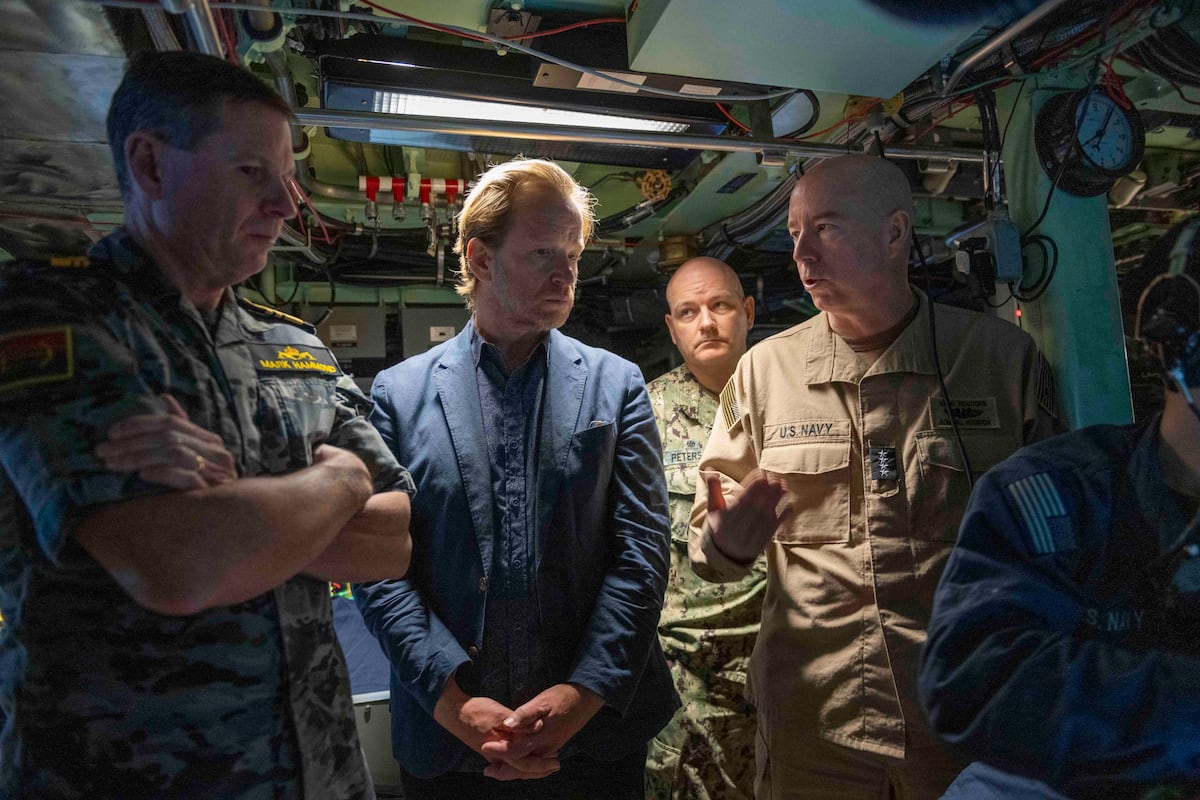In a major milestone of the trilateral AUKUS agreement, eight enlisted sailors and five officers of the Royal Australian Navy graduated last week from the U.S. Navy’s Nuclear Power Training Unit.
“I remain impressed with the quality of Australian submariners who come through the naval nuclear propulsion training pipeline,” Capt. Robert Rose, commander of NPTU Charleston, said in a release. “Six officers previously completed prototype training, each performing exceptionally well. I fully expect these recent graduates, especially our first enlisted personnel, will excel in the fleet.”
The NPTU is provided by the U.S. Navy Nuclear Propulsion Program, which has operated 273 nuclear reactors in a 76-year period, oversees all matters to naval nuclear propulsion and manages all civilians and military personnel tasked with building, operating and maintaining nuclear-powered ships.
The Australian sailors spent six months undergoing rigorous NPTU training to learn how to crew nuclear-attack submarines that the U.S. agreed to deliver to Australia as part of AUKUS. The AUKUS agreement between the United States, United Kingdom and Australia rests on two pillars, the first of which is support for the Royal Australian Navy in acquiring nuclear-powered submarines. The second is to collaborate in key areas of naval technology: undersea capabilities, quantum technologies, artificial intelligence, cyber and electronic warfare.
According to AUKUS commitments, the U.S. is set to deliver three Virginia-class fast-attack submarines to Australia in the 2030s, followed by a new class of five nuclear-attack submarines in the 2040s.
The NPTU provided Australian sailors with courses in nuclear physics, nuclear reactor technology, mathematics and other studies to prepare them to master various nuclear submarine systems and handle their reactors.
Currently, the Royal Australian Navy uses Collins-class diesel-electric submarines. The Collins-class vessels are designed and built by the Swedish Navy and are renowned for their silence and stealth capabilities. However, despite their familiarity with fast-attack submarine weapons and combat systems, the enlisted Australian sailors previously had no experience handling nuclear reactors.
“This graduation marks a significant step forward for our Navy. Having naval nuclear power-qualified officers, and now sailors, is critical in meeting our goal of operating conventionally armed, nuclear-powered submarines,” Royal Australian Navy Commodore Daniel Sutherland said in a release.
As the Defense Department prioritizes deterrence in the Indo-Pacific region, there has been a noticeable uptick in U.S.-Australia naval collaboration within the framework of AUKUS.
On April 7, an Australian delegation visited Portsmouth Naval Shipyard in Kittery, Maine, during which they met shipyard leaders and learned about infrastructure to nuclear-powered submarine capabilities. They also toured the Virginia-class fast-attack submarine North Dakota. Earlier, on April 3, American and Australian naval leadership conducted a joint voyage on another Virginia-class vessel, the Montana.
“The exceptionally rigorous training our submariners are receiving at the U.S. Navy’s Submarine School supercharges their skills and edges us even closer to operating our own nuclear-powered submarines from the early 2030s,” Chief of the Royal Australian Navy Vice Adm. Mark Hammond, who took part on the voyage, said in a release.
“Furthermore, the opportunity for our sailors and officers to gain hands-on experience working in U.S. Navy Nuclear submarines and learn from the extensive experience of their crews is invaluable to the achievement of our shared security objectives, and we are grateful to our U.S. partners for sharing their wisdom and experience operating these platforms.”
Zita Ballinger Fletcher previously served as editor of Military History Quarterly and Vietnam magazines and as the historian of the U.S. Drug Enforcement Administration. She holds an M.A. with distinction in military history.
Read the full article here
